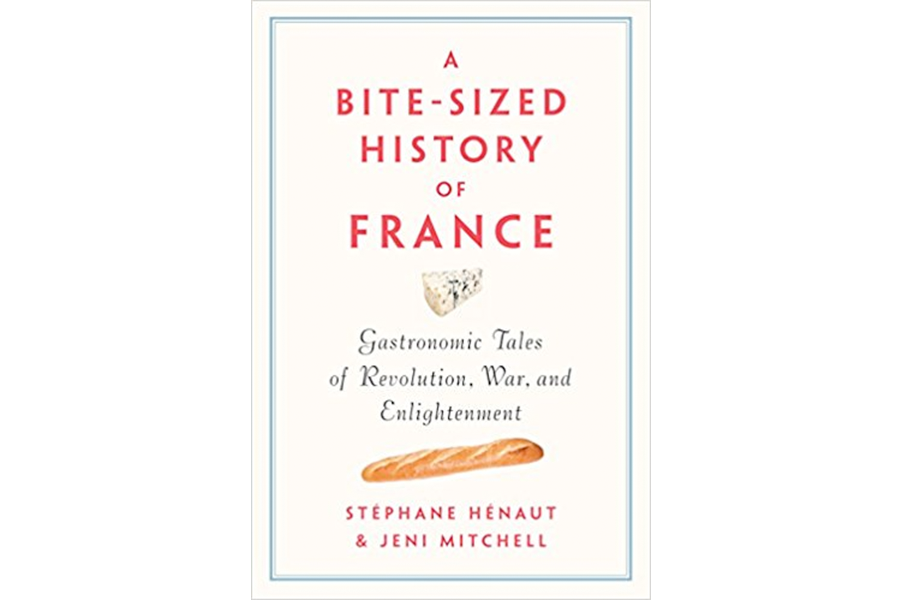'A Bite-Sized History of France' delightfully combines French history with gastronomy
Loading...
Napoleon’s most famous (and probably apocryphal) quote weaves together war and food: "An army marches on its stomach.” In a few short words, we are led to consider the immense logistics that make war possible, and the humanity of the people who wage it. It’s a fitting quote to introduce A Bite-Sized History of France, a new and impressive book that intertwines stories of gastronomy, culture, war, and revolution.
Each amuse bouche-sized chapter of “A Bite-Sized History of France” tackles a different theme, ranging from the relationship between the revolutionary government and potatoes to the connection between the thoughts of philosopher Jean-Jacques Rousseau and a search for “authentic” French food. The book delves back to the origins of seemingly eternal fixtures of French food culture (chocolate, raw oysters, sweet pastries) and teases out the meaning of their arrival. And it dives into serious historical events ranging from revolutions to sectarian massacres with real conviction, recapping many of the most significant political and military developments in France’s long history as it goes.
Throughout the book, the authors return to certain themes that tie together its many far-flung topics and tastes. Chief among these are the theme of inequality – an examination of how the rich and the poor pursue pleasure and sustenance is at the heart of “A Bite-Sized History of France” and that frame provides a window into economics, inequality, and revolution. Perhaps mostly strikingly, the authors tell the story of a famous Christmas Day feast for wealthy Parisian during the 1870 siege by Prussian troops. Food had seemingly run out, but for those with means, the zoo would serve as a kind of exotic butcher shop:
“[The meal] began with a stuffed donkey’s head, an inelegant successor to the usual porcine centerpieces of prewar banquets. The soup course included elephant consommé. This was followed by kangaroo stew, rack of bear in pepper sauce, and roasted camel à l'anglaise (a cheeky reference to what the French saw as the plainness of English cuisine.) The main course included le chat flanqué de rats (cat flanked by rats) and cuissot de loup, sauce chevreuil (wolf in deer sauce), a wry inversion of the natural order.”
Time and again, authors Stéphane Hénaut and Jeni Mitchell look beyond a beloved French snack and find a much bigger story. Behind the French love of butter, stories of Catholic indulgences and brutal suppression of Protestant revolts; behind the tradition of the patisserie, the slavery and war that supported the conversion of sugar from a luxury good to a commodity. The second story, in particular, is rich and chilling: Rum, guns, sugar, and slaves churned around the Atlantic in what the authors describe as a “diabolical trade pattern,” bringing luxury goods to the rising middle classes of Europe and helping to build the American colonial enterprise while destroying native populations in the Americas and enslaving millions of Africans. By the late 1700s, the authors note, the sugar trade accounted for one sixth of French export income, which created powerful incentives to defend and expand an industry reliant on slave labor.
The intertwining between the gastronomical and historical is often robust but not invariably – sometimes a big block of violent history is tied to a slender reed of gastronomy, as when chestnuts are used as an entryway to talk about the massacre of the Huguenots. There’s nothing particularly wrong with this – while individual mini-chapters may skew toward food or revolution, the overall balance is fairly close, and most of the threads of this story are tied off neatly. And beyond food itself, Henaut and Mitchell also draw on their many sources to offer knowledgeable assessments of French wine and spirits, tying them into both gastronomy and larger historical forces.
It’s a shame that there aren’t more books like “A Bite-Sized History of France.” Whatever it lacks in focus, it more than makes up for with its brisk, witty, imaginative voice and its shotgun generalist approach to both history and gastronomy. It’s a roller coaster ride, and when you’re done you’ll wish you could come back for more.








